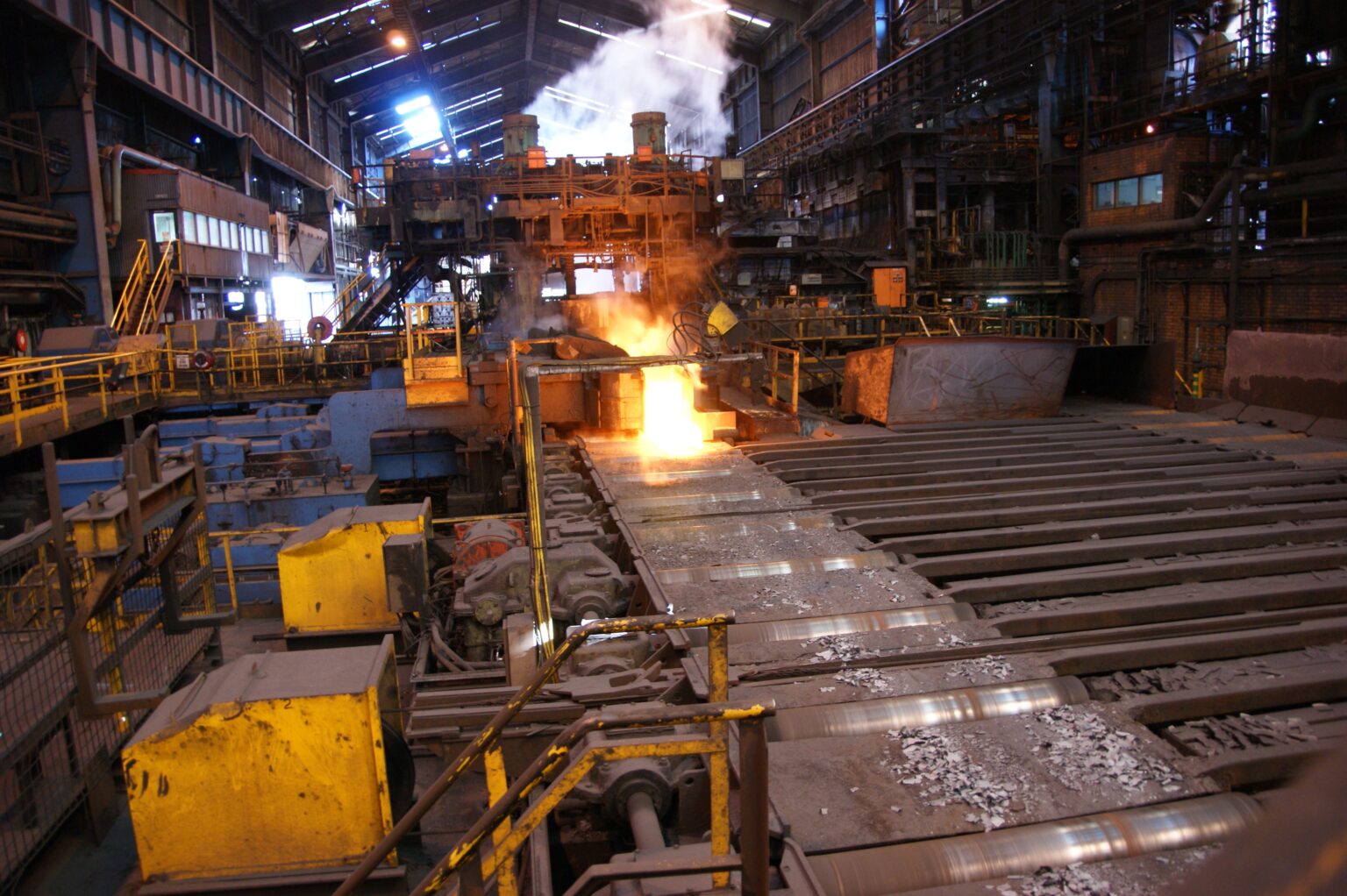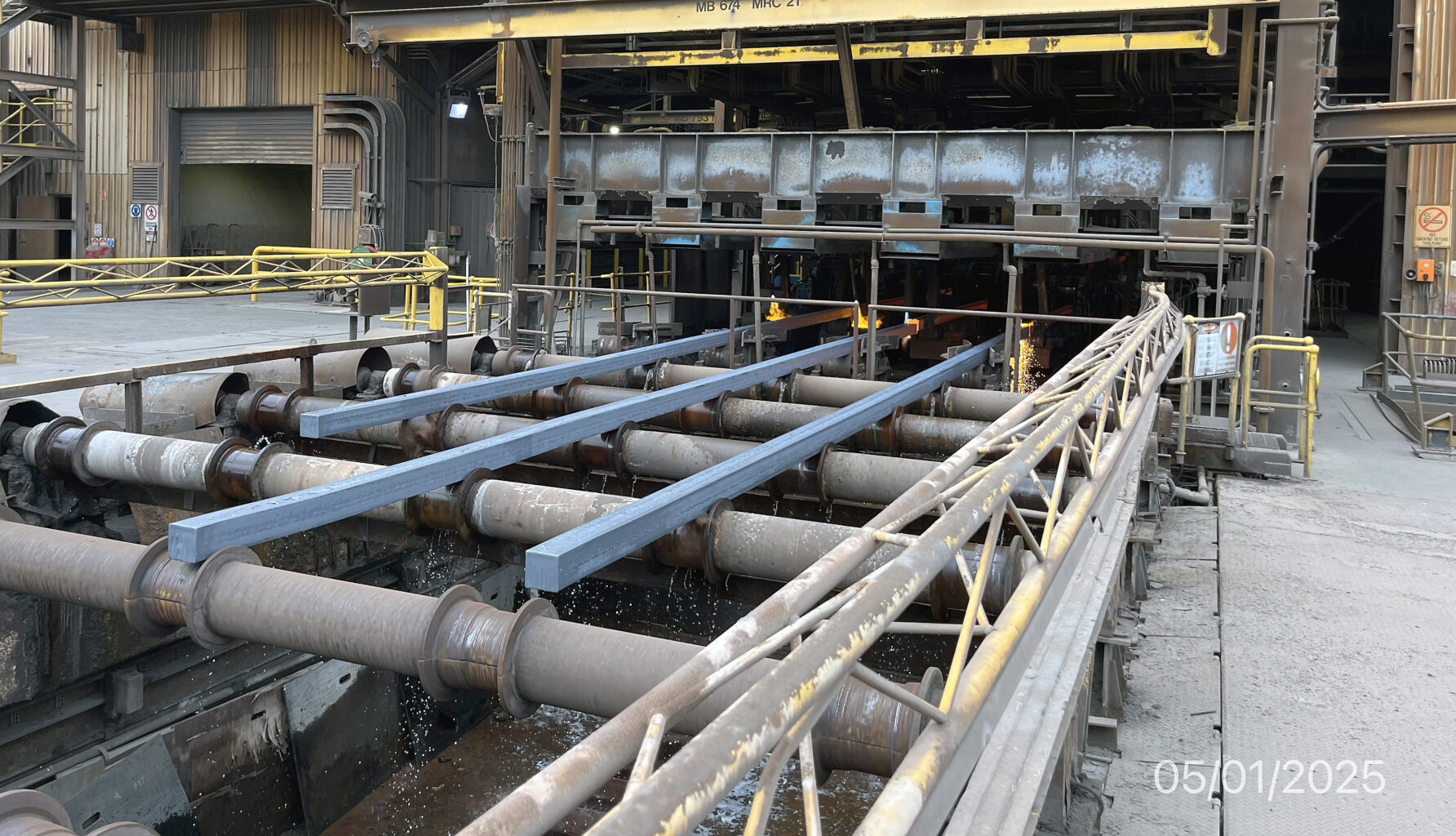LIBERTY held a highly successful debate in Brussels on the “Future of the EU Steel Industry” with key EU decision makers from the European Commission, our national Governments’ representatives and the European Parliament. The event, which was attended by around 40 members of the European Parliament as well as senior members of the LIBERTY team, discussed the potential opportunities and challenges for the European steel industry in the current volatile economic and geopolitical context, as well as how different stakeholders can collaborate better to achieve lasting change and maintain competitiveness for what is a strategic industry for the European economy.
Sandip Biswas, Interim CEO LIBERTY Primary Steel, made a speech titled “The journey towards EU green steel; LIBERTY Steel’s ambitions, challenges, and opportunities for stakeholders’ cooperation” in which he outlined our CN30 ambitions and highlighted the GREENSTEEL transformation programmes at LIBERTY Częstochowa, LIBERTY Galati and LIBERTY Ostrava. Sandip was also very clear on the specific key enabling factors which are vital for the transition to green steel, to ensure that our communities and our national economies really are able to enjoy the truly green Europe of tomorrow. Watch the highlights from his speech below or read the full transcript.
Good afternoon.
First, thanks to Mr Nica, Mr Balt, and Mr Zdechovsky for hosting this important debate and let me thank in advance the other speakers for their inputs on this critical issue, particularly Commissioner Kadri Simson, Deputy Director General Maive Rute and EUROFER Secretary General Axel Eggert .
Today I will take you through what we’re doing as Liberty to transform our assets and what we need from a policy perspective for the steel industry in Europe to remain competitive while continuing to lead on decarbonisation.
It’s a complex story: the aftermath of COVID, the disruption from the war in Ukraine and fears over energy security are underpinning worldwide trends towards economic nationalism.
The European steel industry is having to react to these significant short-term market changes, whilst at the same time not getting distracted from its decarbonisation plans.
Liberty has significant investment planned in Europe to meet our ambition to be carbon neutral by 2030, reflecting the global imperative to halve emissions this decade and reach net zero emissions by 2050.
We believe decarbonisation is THE route to creating a more sustainable and economically resilient industry whilst supporting the EU’s Green Deal goals.
Goals that are not just important in Europe, but that carry weight and significance in the global efforts to decarbonise.
Where Europe leads others follow. Get the balance between carrot and stick right here, and we can set an example for the world.
Europe is a huge market and will continue to be an attractive destination for investors provided it remains competitive as a low carbon advanced manufacturing economy.
Europe already benefits from a high skills base and supportive conditions for technology development and decarbonisation.
But we’re in a global race and other countries are catching up and in some cases, overtaking, as demonstrated in the USA by the Inflation Reduction Act.
Bit by bit, we’re seeing decarbonisation moving from moral principle to pragmatic competitive edge.
But how DO you decarbonise something as energy-intensive as steel production? And do so while remaining internationally competitive?
After all, there are only two dominant ways of making steel today:
Either primary production from iron ore that needs a blast furnace running at over 1,200 degrees Celsius and that traditionally uses coking coal.
Or secondary production which uses electric arc furnaces - EAFs - to recycle steel scrap by consuming huge amounts of electricity.
Currently both routes rely on huge amounts of fossil fuels – and therefore carbon emissions - to produce steel.
The good news is that technology is advancing solutions to decarbonise. But they need support to further develop and scale in order to be competitive and rapidly replace legacy processes.
The main available and proven technology route is to maximise EAF production, as it emits just a tenth of the direct emissions compared with blast furnace production.
Modern so called “hybrid-EAFs” can run on renewable energy which nearly eliminates scope 1 & 2 emissions from the process.
Hybrid EAFs also have the advantage of being able to process a range of materials – hot metal, DRI and scrap - making them a very flexible technology and ideal for transitioning away from blast furnaces.
This transformation is underway across all three of our major steel making sites in the EU; at Częstochowa in Poland, at Ostrava in the Czech Republic, and at Galati in Romania.
Each site has a role to play in our carbon reduction plan that will drastically reduce the five million tonnes of carbon they currently emit annually.
Last year in Ostrava, with our technical partner Danielli, we announced the first project in Europe that will entirely replace its blast furnaces with hybrid EAFs, which will reduce carbon emissions by 80% by 2027.
In Galati we are making similar investments, and in Częstochowa we’re focussed installing 3 MW of renewable energy capacity to further decarbonise its existing EAF operations.
The second decarbonisation route we’re focused on is removing coking coal from primary steel production.
It works by replacing coal first with natural gas as the reducing agent for iron ore and eventually reduction with green hydrogen produced by renewable power.
Using natural gas through Direct Reduce Iron (DRI) furnaces can reduce carbon emissions from primary steel production by half and using green hydrogen will get us close to zero carbon emissions.
Today, this route is only truly viable in certain locations across the world where conditions are just right.
Our plant in Whyalla in South Australia is perhaps the best example globally.
There we have vast high quality magnetite reserves, fantastic solar and wind resource, a deep-water port, a well-connected rail network, and a super skilled workforce.
This rich mix in Whyalla makes it among the best locations in the world to decarbonise primary steel making, and is made even more appealing by the South Australian Government’s commitment to invest in a 250MW hydrogen electrolyser in Whyalla to support the industrial production of the green hydrogen required.
In either technology route the key to speeding up the transition to green steel is contingent on access to large scale competitive clean power, access to critical raw materials such as steel scrap and iron ore, investment incentives and protection from unfair competition from markets that do not produce to the same standards as Europe.
So, I’d like to highlight some specific key enabling factors that are vital to the transition to green steel our communities and our national economies really are to deliver the truly green Europe of tomorrow:
First, the EU needs effective long term industrial policy . We welcome the Commission’s President’s speech which announced the upcoming Green Deal Industrial Plan, supported by a Sovereignty Fund. We were equally glad to read that the Plan aims at simplifying and speeding up the access to EU funding schemes and state aids and incentivize renewable energy. We do support open and fair trade but share the President’s view that EU trade policy should aim at levelling the playing field for the EU industries against imports of cheap, carbon-intensive steel from third countries. So we continue to call upon the EU institutions and Governments to keep steel safeguards measures. Second, ensure the Carbon Border Adjustment Mechanism is effective. Here, I would like to congratulate the Czech Government, MEPs and the European Commission for the outstanding work done in reaching an agreement on the CBAM and ETS. We encourage you to continue working on a concrete and effective solution for exports and ensuring that plants emitting less carbon - such as those using hybrid EAFs - are adequately rewarded.
Third, tackle the energy crisis - The EU needs to ensure the supply of abundant, secure and affordable low carbon energy as a transition to EAF production will require a four-fold increase in our electricity usage. We are looking forward to the review of the Electricity Market Design and encourage the Commission to adopt measures that support and prioritise energy-intensive industries.
Fourth – and particularly important for the long-term - support the industrial deployment of hydrogen.. The upcoming revised European legislation on Hydrogen and Gas Decarbonisation is a strategic tool that can clearly prioritise the use and supply of hydrogen to those sectors, such as steel, where its use can deliver huge carbon emissions reductions, as Whyalla will show.
Fifth, start treating steel scrap as a critical raw material. As we transition to EAF technology, our demand for this material is likely to more than triple. Shortages are expected well before 2030 as current scrap levels will not fulfil the demand. So here, I would point to the upcoming EU Waste Shipment Regulation trialogue in making sure that shipment outside the EU is subject to stronger monitoring system and anticircumvention measures. Scrap is a critical raw material as such it should be included in the Critical Raw Materials Act.
Sixth – and finally – human capital is vital in finding good, qualified people to help transform the steel industry. We need to revitalise the image of the sector as a force for good and a place where young steelmakers can make a difference. We are glad to see that that the third pillar of the Green Deal Industrial Plan is about developing the skills to make a just transition, as EU stakeholders need to cooperate to ensure that the right training and academic opportunities are put in place to ensure the EU has the right talent and avoid “expertise leakage”.
We’re already doing our part with the launch of the GREENSTEEL Academy and the GFG Foundation in Czechia and Romania to help upskill our current employees for the future and attract new young talent
As you can see your help and support are vital to all our strategic business objectives .
This transition will have to be a team effort where manufacturers, investors, customers and government come together to transform processes and protect our planet..
Please be assured, we are committed to Europe, we are committed to GREENSTEEL and we look forward to you offering the long-term support and a solid public-private partnership needed for us to become carbon neutral by 2030. Providing long term sustainable jobs for the communities and economies that depend on us.
Thank you. I’ll now be happy to take questions.
Latest News
View All Media Releases
Media Releases
LIBERTY proposes new measures to drive demand for UK steel production and stimulate investment
LIBERTY Steel’s submission to the UK Steel Strategy consultation has proposed decisive Government action in the form of strategic demand...
View Archived
Archived
Whyalla steelworks up and rolling again
Another milestone following blast furnace restart The resumption of steel production in the Whyalla Steelworks has reached another milestone with...
View Archived
Archived
Whyalla steel production restarts but GFG cautious
Whyalla Steelworks has cast its first steel following a 4-month shut down due to operational challenges and extensive repairs. The...
View Archived
Archived
Introducing the Steel Town Podcast: A glimpse into the heart of steelmaking in Whyalla
GFG Alliance has launched Steel Town, a new podcast series that takes listeners into the world of mining and steelmaking in...
View